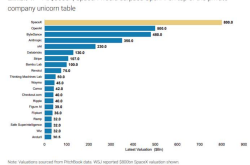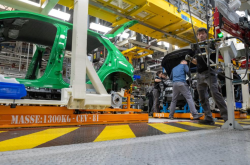OPPO K13 Turbo Pro Hands-on: Great Gaming Experience, but Quite One-Sided
![]() 07/28 2025
07/28 2025
![]() 540
540
K13 Turbo Pro Hands-on Review!
I wonder if any of our readers have been keeping an eye on OPPO lately.
That brand that we've always thought of as the "green factory/black factory", "good at taking photos", and "strong offline", suddenly released an extremely "non-mainstream" gaming phone recently.
Yes, I'm talking about the K13 Turbo Pro in my hands, which starts at a price of just 1999 yuan.
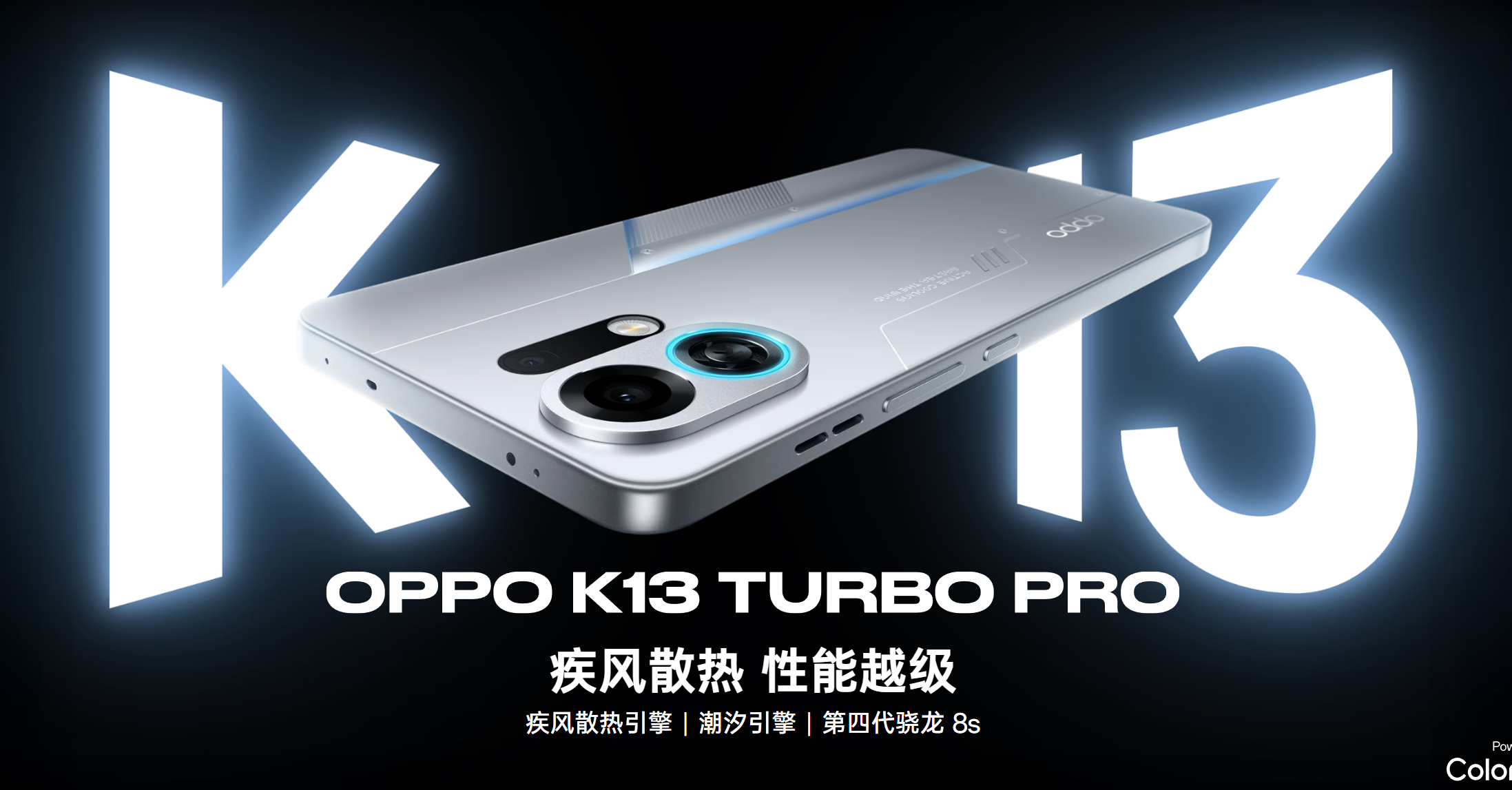
(Source: OPPO)
At first glance at the spec sheet, I admit I was a bit confused. Snapdragon 8s Gen 4, 7000mAh battery, active cooling fan, IPX9 waterproof rating, and true "QR code-level" camera... These specifications combined with the price make it seem a bit unreal.
It's hard to believe that in 2025, a mainstream manufacturer would take such an aggressive and even somewhat obsessive approach to creating a phone in the two-thousand yuan price range.
After using it for a while, I want to share my thoughts with you today: In today's market where flagship phones are overpowered and mid-range phones are fiercely competitive, what kind of existence is this "one-sided student"?
It has to be said that OPPO's design approach this time for the K series can be described as a "self-subversion".
It completely abandons the aesthetic paradigm pursued by the mainstream market of being thin and light, and sleek. From the moment you pick it up, words like heavy, solid, and high-density will immediately fill your mind. It's like one of the few tough guys on the market, with a strong sense of muscularity.
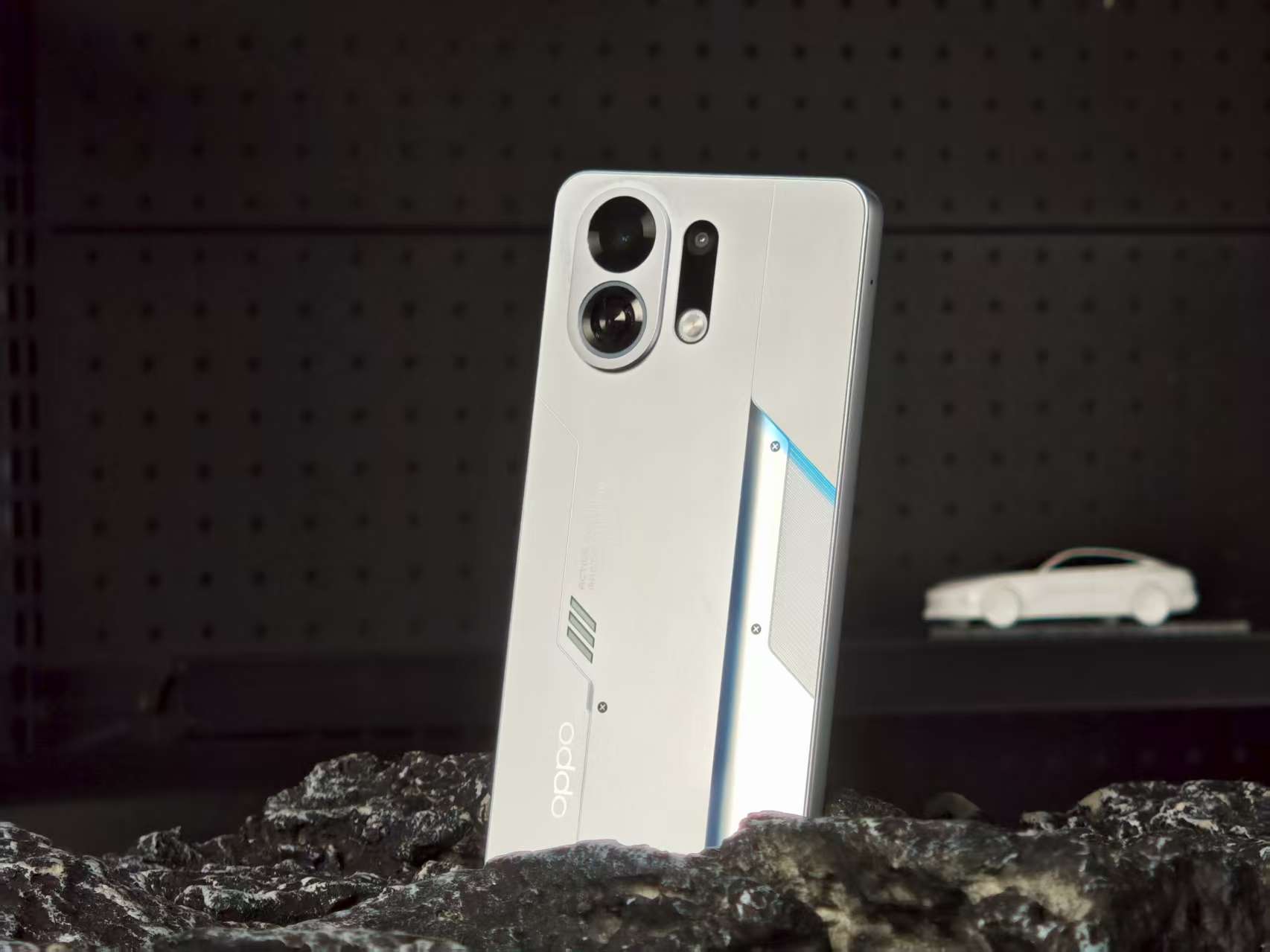
(Source: Leitech)
Of course, users familiar with OPPO's K series are probably used to such 180-degree changes.
After all, since the inception of this series, almost every generation has changed its positioning, from performance-oriented, popularizing imaging, three-proof daily use, to this time transforming into a gaming phone. It can be said that OPPO's product line can accommodate any needs.
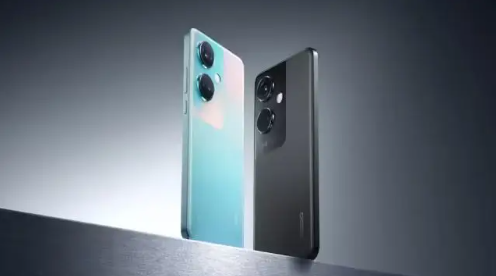
(Source: Leitech, OPPO K11 focusing on imaging)
With its all-in approach to performance and battery life, it doesn't need to consider the protrusion of the camera module because its "shortcomings" are quite obvious.
To fit that huge 7000mAh battery and an entire cooling system, the thickness of this device reaches 8.3mm, and its weight exceeds 210g. Coupled with a body width of about 78mm, even male users with larger palms like me can feel a certain amount of bulkiness.
Users accustomed to thin and light phones will definitely feel uncomfortable when using it for the first time. It's not suitable for tight pants pockets, nor is it suitable for brushing short videos one-handed on the subway for an hour.

(Source: Leitech)
The good news is that although it uses a matte plastic frame, if you look closely, its body frame still has a relatively smooth transition. The composite glass fiber material of the back panel provides strength while also weakening the plastic feel through delicate textures. This is a pure functional beauty.
Moreover, the active cooling fan on the back even supports RGB lighting effects, adding a sense of ceremony to gaming.
This mindset of sparing no expense for the core experience is also reflected in the screen.
It does not pursue an extreme four-sided equal width, with the chin being slightly wider than the other three sides. However, this 6.8-inch 1.5K OLED straight screen has decent quality with a 120Hz refresh rate, a peak brightness of 1600 nits, and a 10-bit color depth. These hard parameters ensure its visual experience in daily use and gaming scenarios.
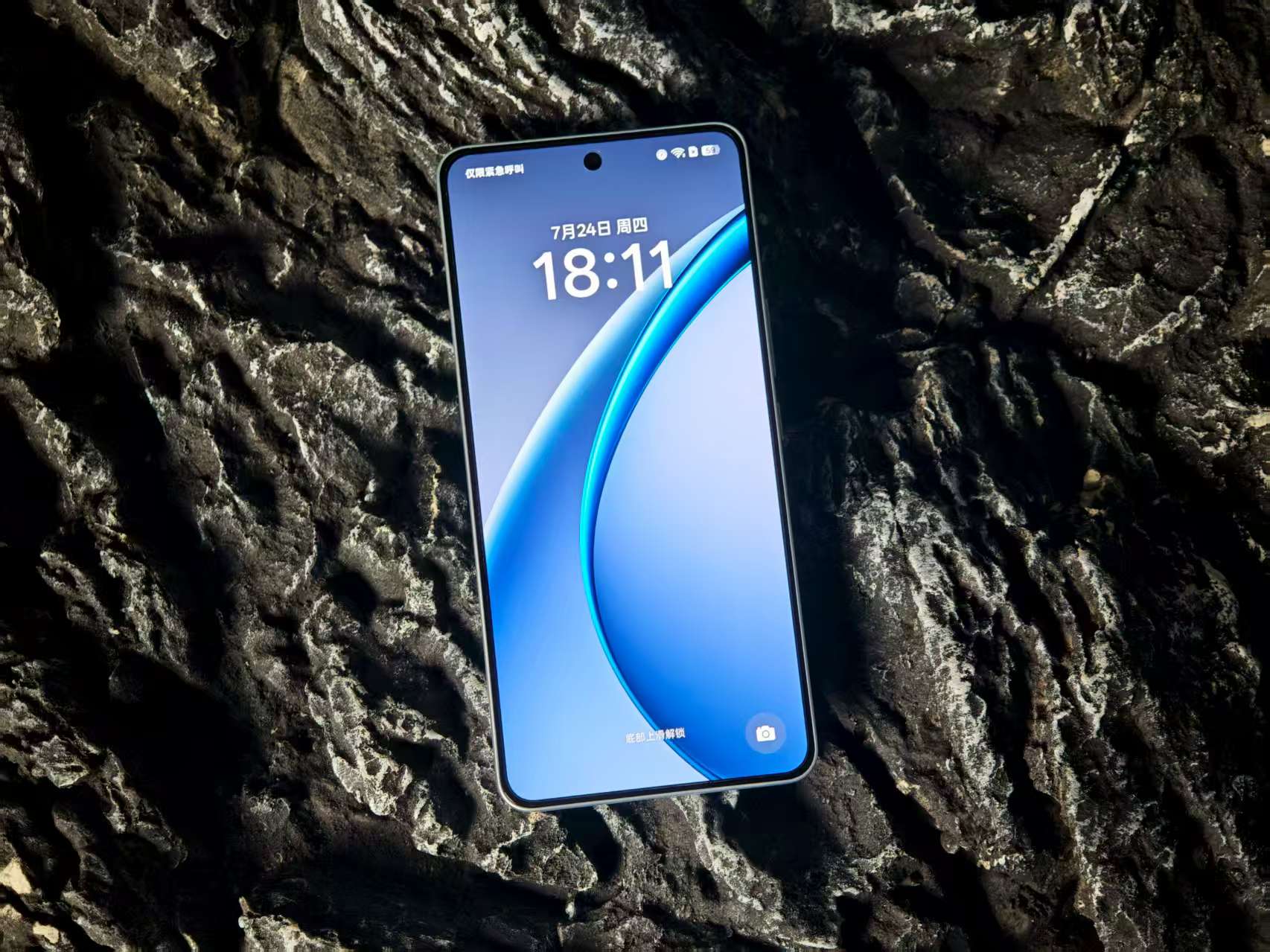
(Source: Leitech)
It can only be said that compared to some products in the same price range that still use FHD+ screens or plastic brackets on the screen, OPPO has used the cost effectively this time.
As for not having ultrasonic and only providing ultra-thin under-screen fingerprints, this part is a matter of personal opinion.
Now that we've talked about the appearance, the most worthwhile part of this phone to discuss is, of course, its gaming and battery life experience.
Obviously, OPPO is no longer satisfied with passive cooling. This time, they used a newly structured cooling fan, which is not the traditional through-air duct design found on phones but is more similar to the approach used in laptops. It directs the heat from the SoC to the vapor chamber and heat sink fins, and then uses the fan to blow away the heat from the fins.
The advantage of this design is that it can increase wind power and reduce space occupancy. As for the disadvantages... you'll see later.
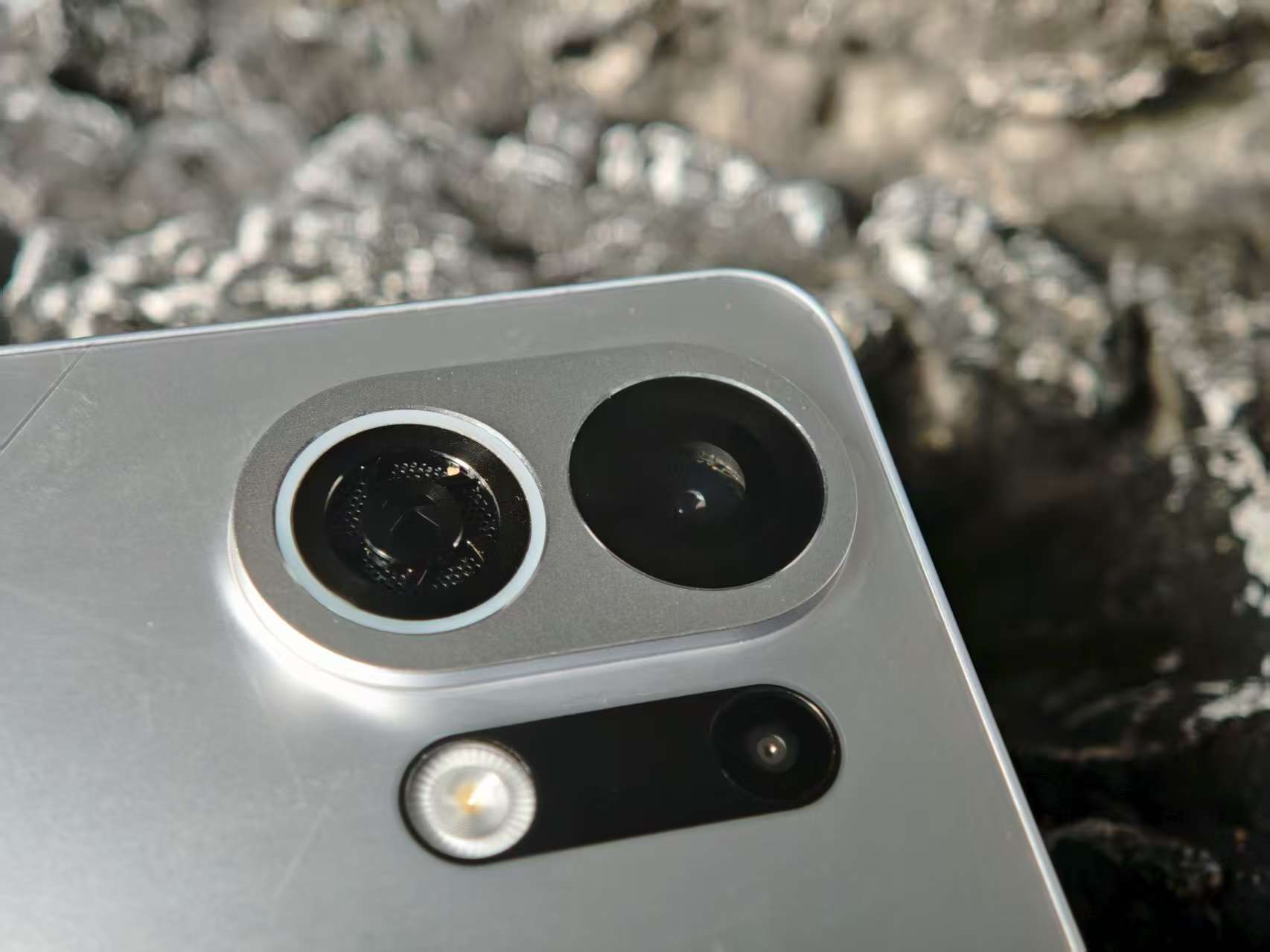
(Source: Leitech)
As for the core configuration, it's the Snapdragon 8s Gen4, which is not very common this year.
Although this processor has a relatively mediocre reputation online, after stacking up the cooling buffs, the Snapdragon 8s Gen4 on the K13 Turbo Pro is still likely to be the strongest performer in this price range in terms of performance release. Let's take a closer look at the actual test results.
First, we tested AnTuTu once each with the performance mode on, with the cooling fan on and off.
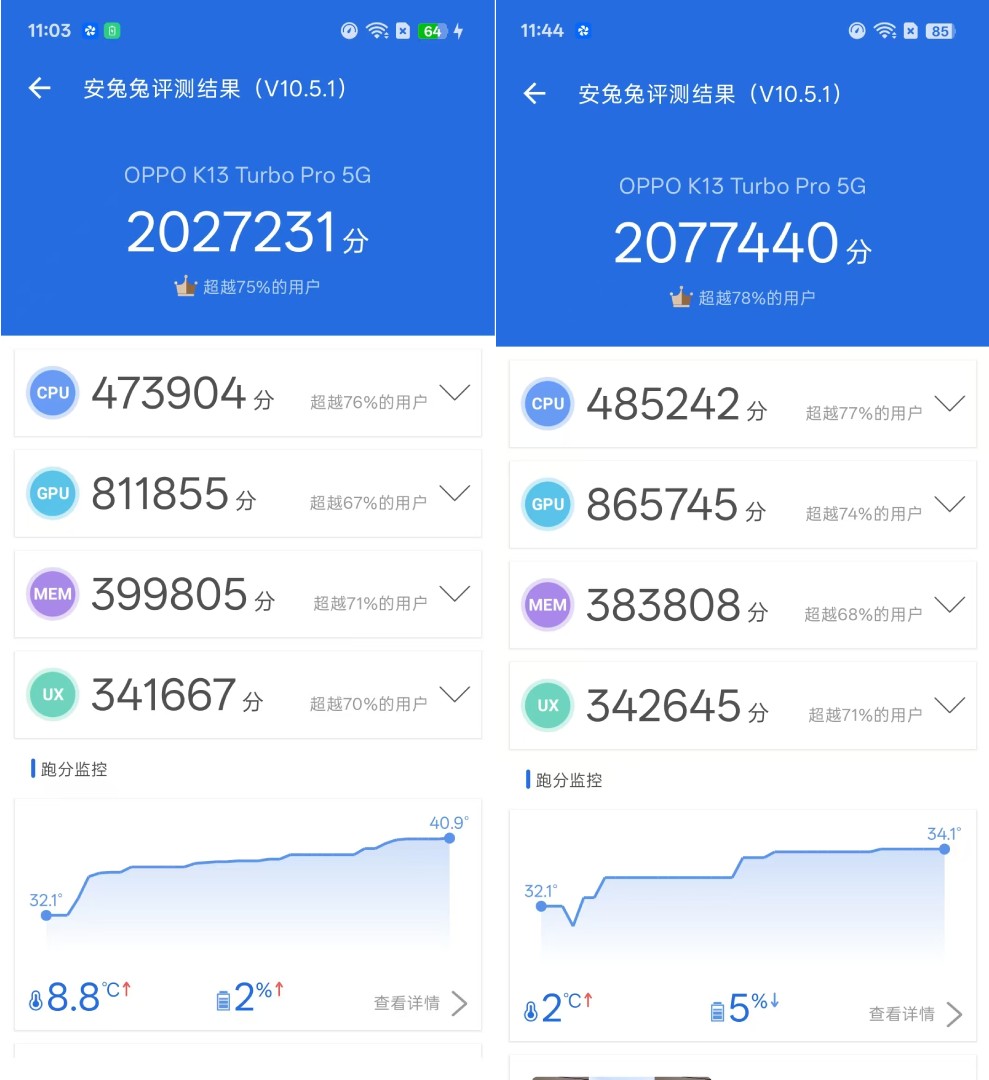
(Source: Leitech)
The results are as shown in the image, with 202W points when the cooling fan is off and 207W points when the cooling fan is on, which is a pretty good score.
Next, we turned on the smart fan and ran "Honor of Kings" for about half an hour. The frame rate remained almost unchanged throughout, with a total power consumption of about 3.62W.
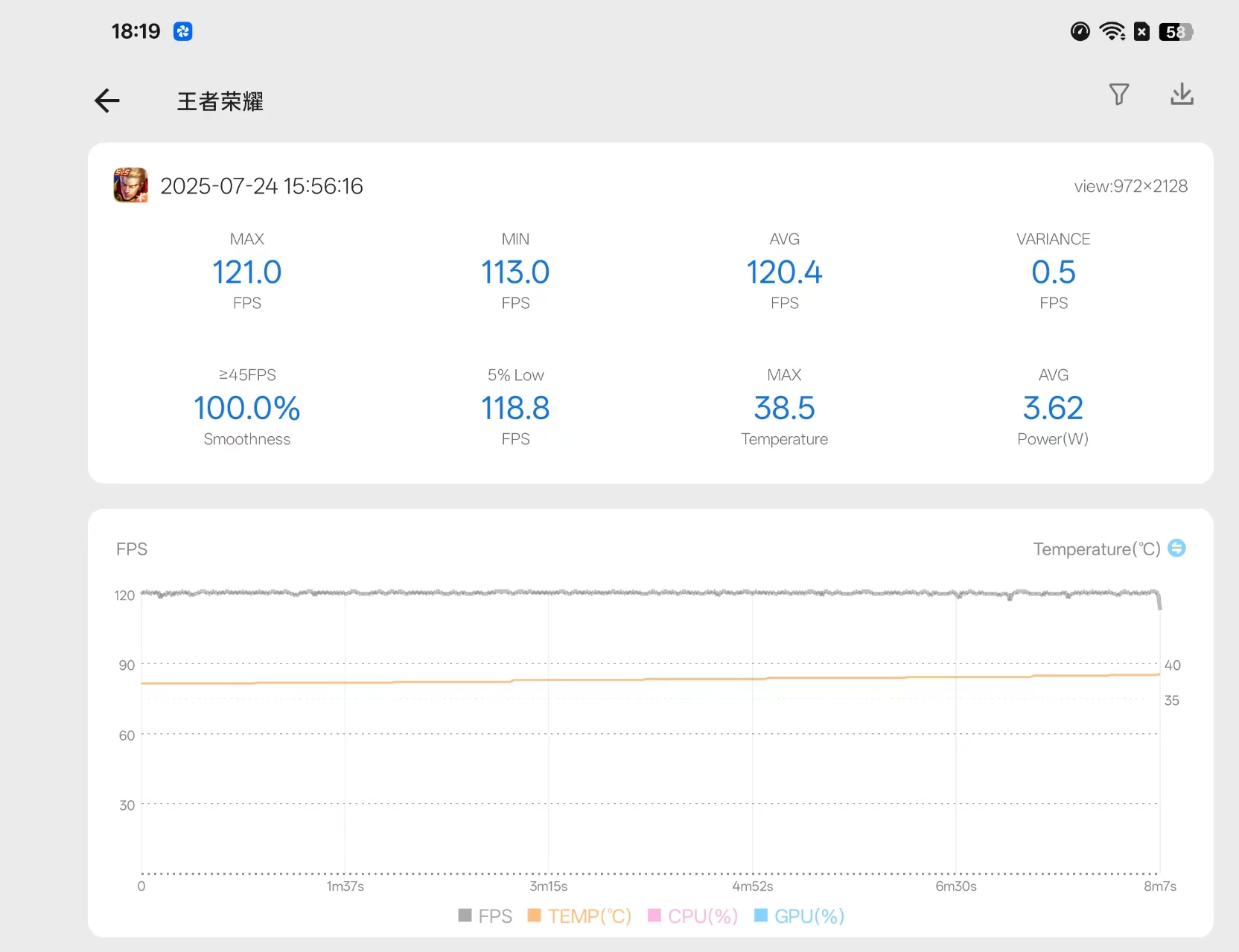
(Source: Leitech)
For a secondary flagship chip released this year, this is indeed a routine operation.
However, the frame rate curve of the K13 Turbo Pro remains as straight as a ruler, without any signs of thermal throttling because it doesn't heat up at all. In an environment with a room temperature of 24 degrees, after half an hour of gaming, the maximum temperature on the back of the phone is only 41.7 degrees, and the area where the hand grips is only around 39 degrees.
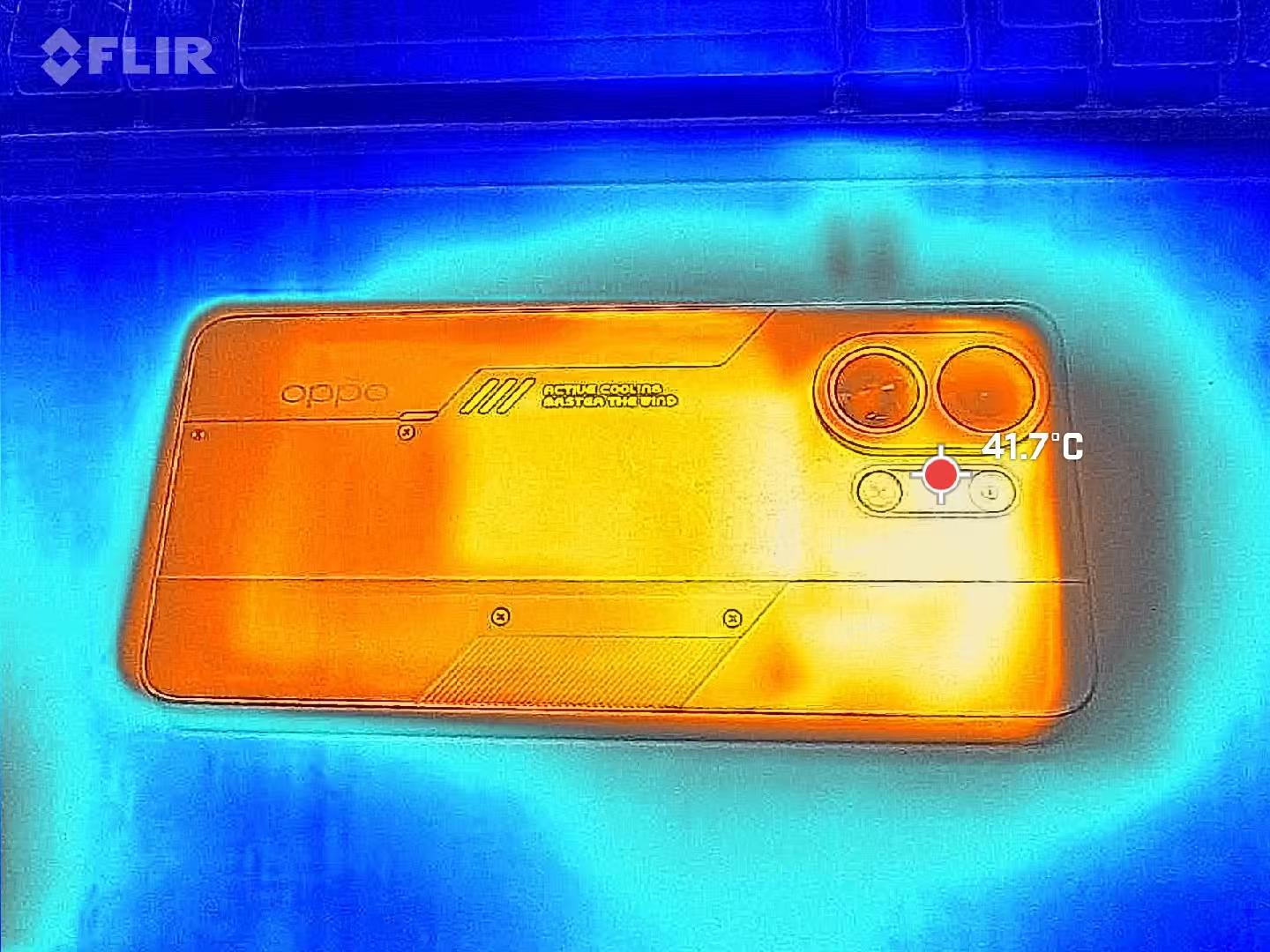
(Source: Leitech)
This temperature can only be described as "warm", which is quite absurd.
A small note here, after the game ends, the fan will continue to run in the background for a few minutes to dissipate heat, so the body cools down quickly. This cooling performance is indeed very reassuring.
For "Naraka: Bladepoint", which has higher requirements on the processor, we conducted two tests successively.
First, without the fan on, for the first 20 minutes of regular scenes, only the first two to three minutes could maintain 50-60 frames, and then it stabilized at around 40 frames for a long time, with a total power consumption of about 6.02W.
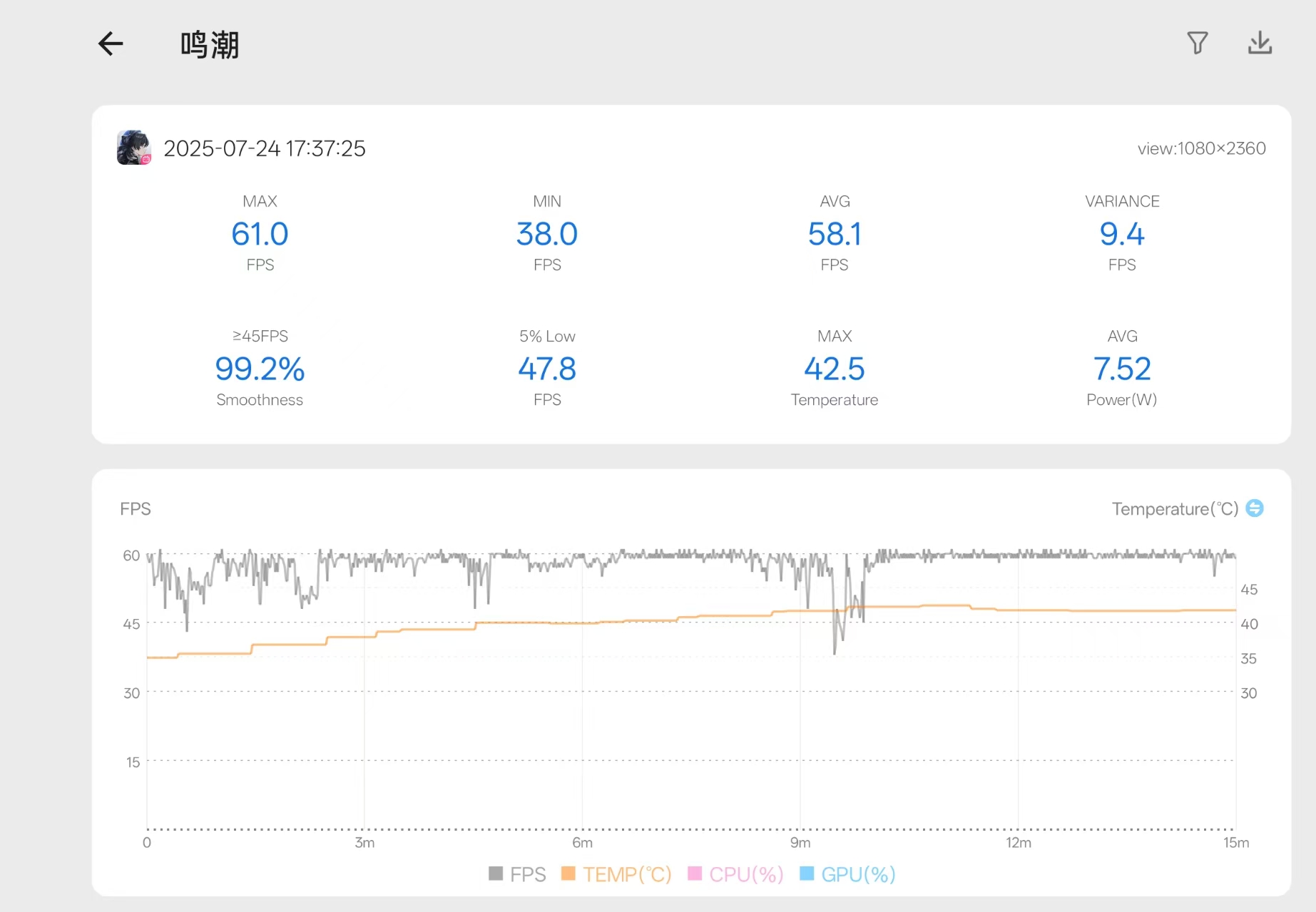
(Source: Leitech)
Then, with the fan on full blast, for 20 minutes of regular scenes, the average was 58.1 frames, which could not maintain a straight line, and the temperature reached around 46 degrees, which was still somewhat hot, but compared to other products with the same processor, it was already the best theoretical performance of this processor.

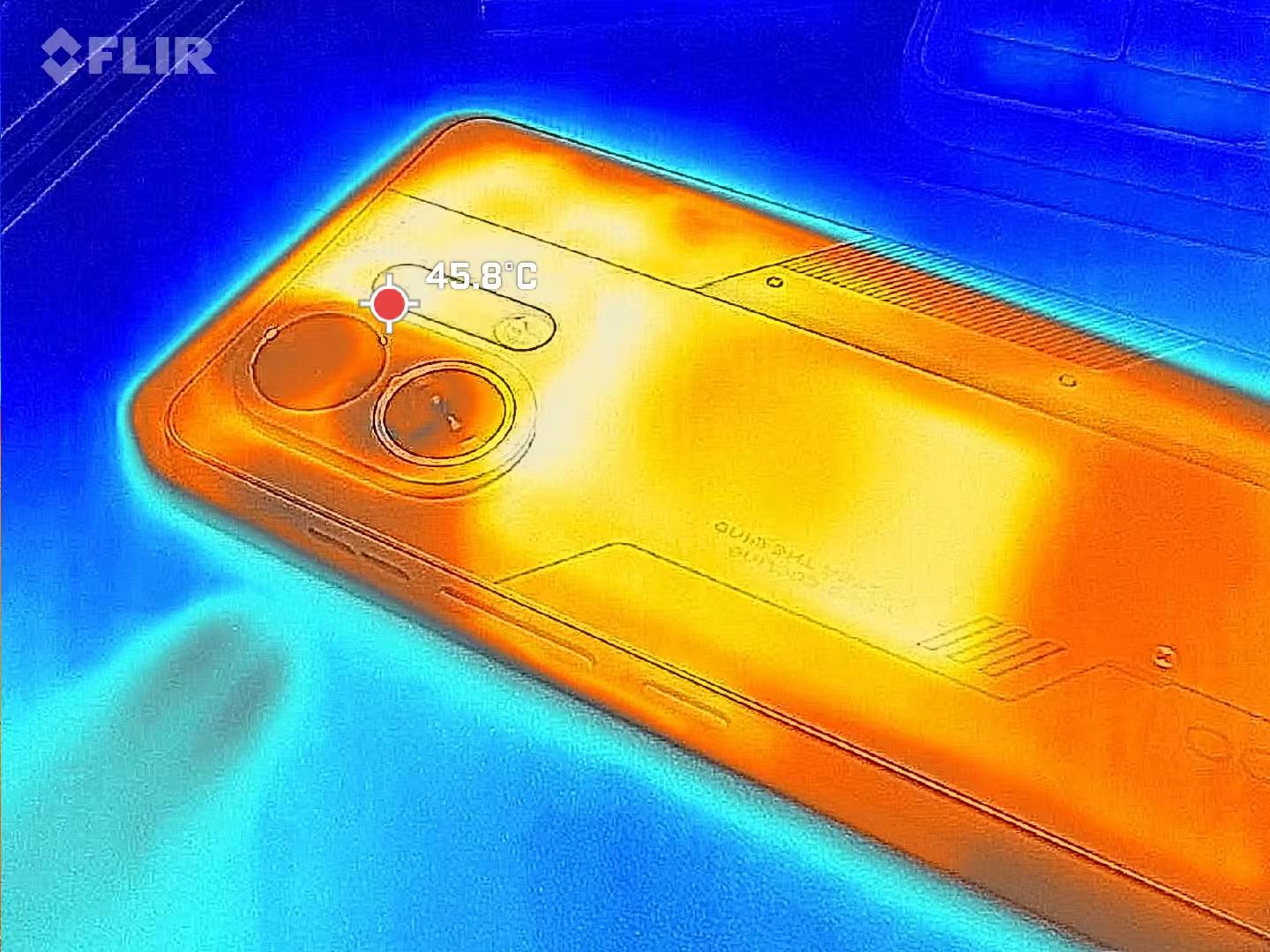
(Source: Leitech)
It can be determined that the "air-cooled VC hybrid cooling" is indeed not a gimmick, but it also doesn't have the effect of turning something mediocre into something magical.
In addition to innovative hardware, the gaming functions that come with ColorOS 15 also bring a significant improvement to the experience. Features such as extreme frame rate stabilization, super HDR image quality, and game voice changer are all available. More crucially, there's the "bypass charging" function, which bypasses the battery and directly supplies power to the motherboard when you're charging while playing, keeping the body from getting hot and the battery healthier.
Apart from the gaming experience, another major selling point of the K13 Turbo Pro is its battery life.
In my opinion, theoretical testing of a 7000mAh battery has lost its significance. In actual use, with a full charge around 9:30 AM, after a full day of medium to high-intensity use, including commuting videos, social chatting, 1 hour of gaming, navigation, and photography, there's still about 46% battery left when I get home; the next day, with normal use, it will prompt that the battery is below 20% around noon.
This experience of nearly "one charge every two days" can indeed effectively alleviate my battery anxiety.
On the K13 Turbo Pro, OPPO still demonstrates its pursuit of durability.
An obvious common sense is that as long as there are holes on the body, the waterproof performance will inevitably be compromised. And for cooling, the K13 Turbo Pro not only has an air inlet for the fan on the camera module but also has an air outlet for the fan on the right side frame of the body. Logically, it should not be exposed to water.
But in fact...
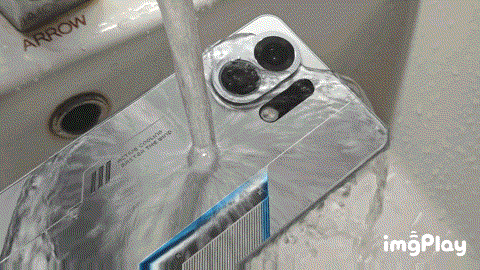
(Source: Leitech)
Like this, thanks to its special structural design, the K13 Turbo Pro has waterproof performance, and quite good at that, passing IPX6, IPX8, and even IPX9 waterproof tests. This means that you can not only directly rinse it like me but also ride with it in heavy rain or even theoretically withstand the washing of a high-pressure water gun.
But on the other hand, if the fan opening gets clogged, will it affect cooling? If you really buy this phone, remember to clean the dust regularly.
Apart from that, other peripheral configurations are quite slapdash, with not many network frequency bands and only single-frequency for Beidou and GPS. They work but are not very good.
In terms of imaging, the main camera is a 50MP OV50D40 sensor with a 1/2.88" size and supports OIS optical image stabilization, which is commonly seen as a secondary camera on imaging flagships. The parameters can be described as very perfunctory.
Judging from the sample photos, the overall feeling after using it is that in sufficient light, the K13 Turbo Pro is definitely not just at the level of scanning QR codes. The colors are true, and the details are acceptable, but it's not that great. It's just a standard thousand-yuan performance phone level.
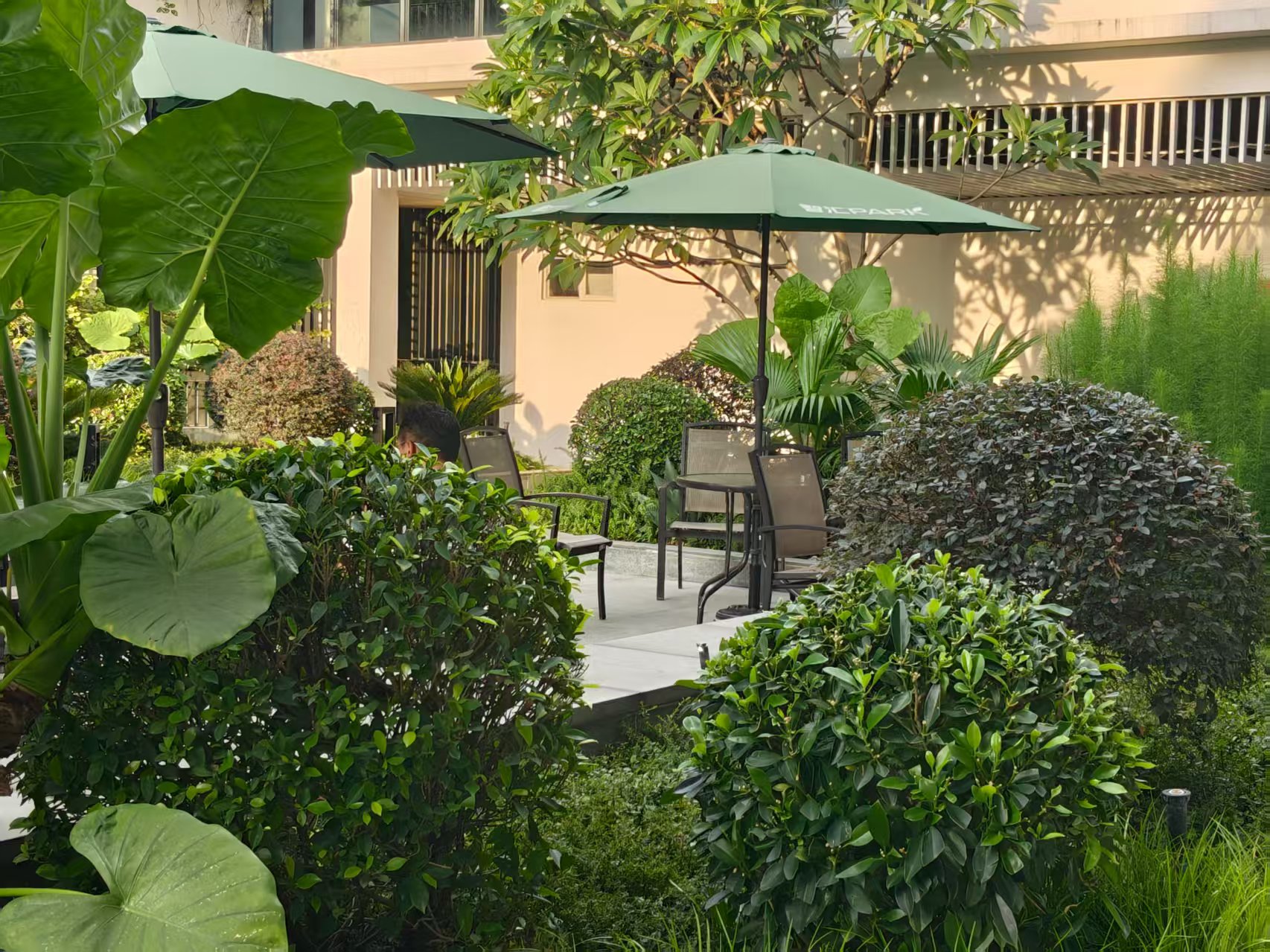
(Source: Leitech)
I guess OPPO also knows that the focus is not on photography, so the camera interface is very simple. However, the system album still has built-in functions such as AI removal, smart cutout, and several filters imitating film styles. Anyway, it gives you all the basic functions you need.
It can only be said that when you think it has completely given up on photography, it has actually strived to make it "usable", giving people a sense of surprise like "a poor student with many stationery".
As usual, here is our summary of the K13 Turbo Pro experience based on the Leitech review template:
Advantages:
1. Good performance release;
2. Top-tier battery life;
Disadvantages:
1. Relatively bulky body;
2. Basic imaging system.
In my opinion, the K13 Turbo Pro is a purely functionalist design that provides the top-level performance release and battery life performance you can buy in this price range, with maximized cost-effectiveness.
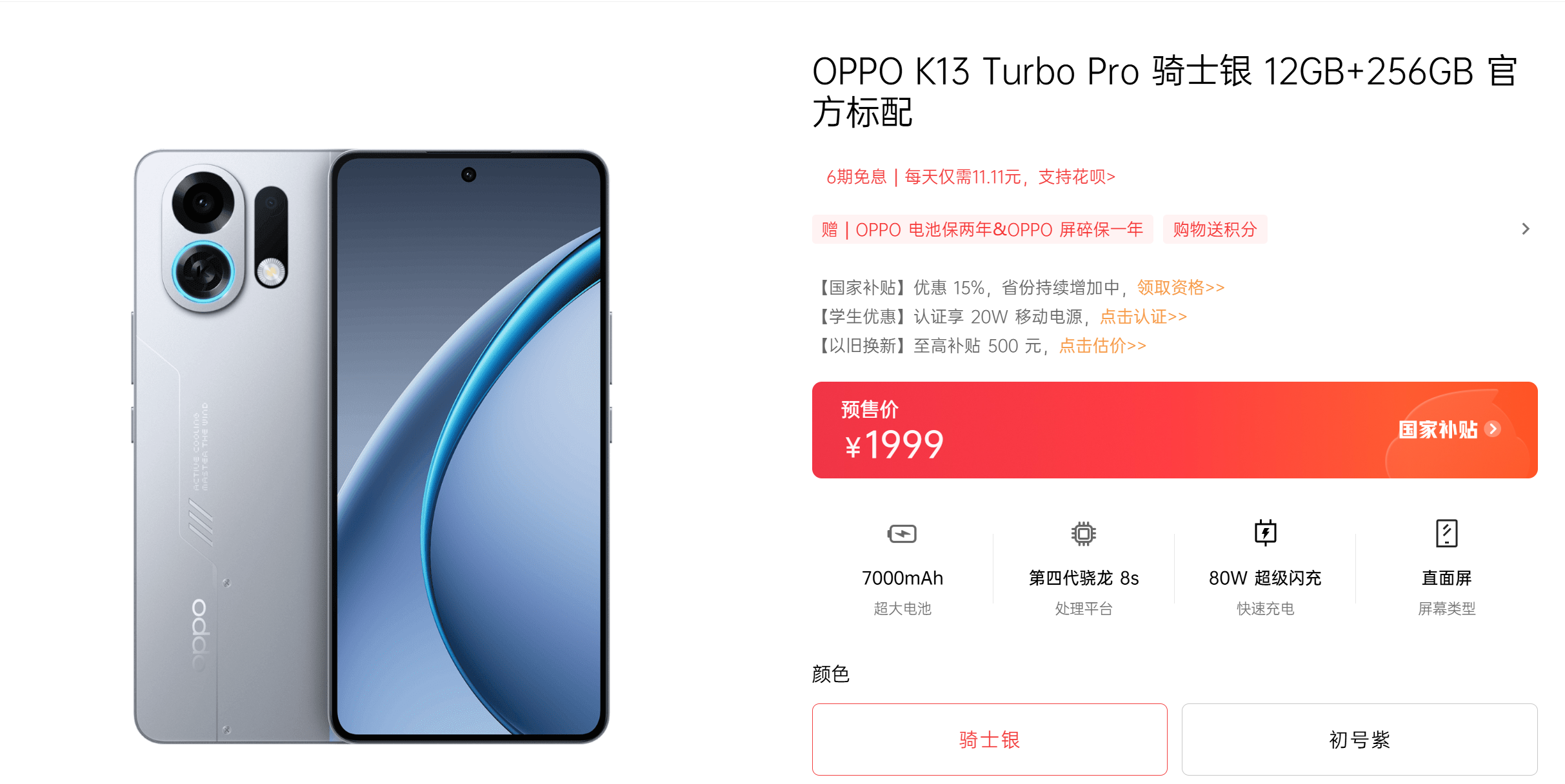
(Source: OPPO)
In addition to secondary flagship-level hardware, fan cooling, and system-level performance optimization, it performs quite well in the traditional strength of gaming. It also provides top-tier waterproof and drop-resistant performance at an almost "free" price, with maximized durability.
It should be noted that this kind of "one-sided student" phone is essentially designed to serve a specific group of people.
The K13 Turbo Pro chooses to accurately tap into the niche market of "those who need high performance, long battery life, and a limited budget" at the cost of a bulky body and basic imaging.
If you're a heavy gamer, a delivery rider or ride-hailing driver who needs their phone's screen to stay on for extended periods, or if you simply can't stand the anxiety of seeing your battery drop to red and needing a charge every day, then the OPPO K13 Turbo Pro is tailor-made for you. Why not take a closer look at this product?
OPPO Gaming Smartphone with Active Cooling Technology - Affordable Price
Source: Leitech
Images in this article are from: 123RF Licensed Stock Photo Library Source: Leitech

